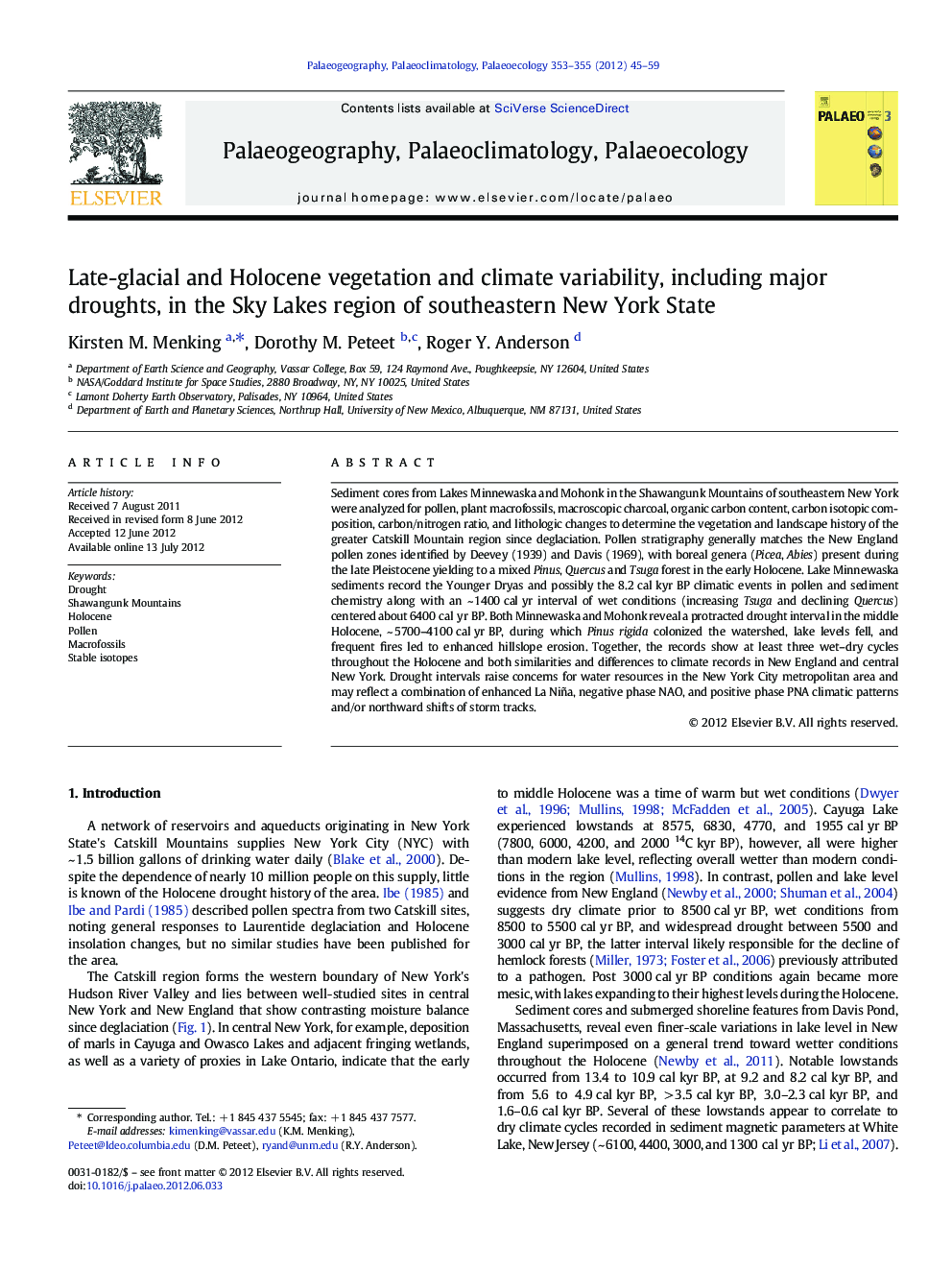| کد مقاله | کد نشریه | سال انتشار | مقاله انگلیسی | نسخه تمام متن |
|---|---|---|---|---|
| 4466791 | 1622224 | 2012 | 15 صفحه PDF | دانلود رایگان |

Sediment cores from Lakes Minnewaska and Mohonk in the Shawangunk Mountains of southeastern New York were analyzed for pollen, plant macrofossils, macroscopic charcoal, organic carbon content, carbon isotopic composition, carbon/nitrogen ratio, and lithologic changes to determine the vegetation and landscape history of the greater Catskill Mountain region since deglaciation. Pollen stratigraphy generally matches the New England pollen zones identified by Deevey (1939) and Davis (1969), with boreal genera (Picea, Abies) present during the late Pleistocene yielding to a mixed Pinus, Quercus and Tsuga forest in the early Holocene. Lake Minnewaska sediments record the Younger Dryas and possibly the 8.2 cal kyr BP climatic events in pollen and sediment chemistry along with an ~ 1400 cal yr interval of wet conditions (increasing Tsuga and declining Quercus) centered about 6400 cal yr BP. Both Minnewaska and Mohonk reveal a protracted drought interval in the middle Holocene, ~ 5700–4100 cal yr BP, during which Pinus rigida colonized the watershed, lake levels fell, and frequent fires led to enhanced hillslope erosion. Together, the records show at least three wet–dry cycles throughout the Holocene and both similarities and differences to climate records in New England and central New York. Drought intervals raise concerns for water resources in the New York City metropolitan area and may reflect a combination of enhanced La Niña, negative phase NAO, and positive phase PNA climatic patterns and/or northward shifts of storm tracks.
► We use a multi-proxy approach to study climatic changes in southeastern New York.
► Sediment chemistry, macrofossils and pollen reveal wet–dry shifts during the Holocene.
► Strong drought in the middle Holocene favored Pinus rigida and caused Tsuga decline.
► Drought also led to fires (charcoal) and landscape instability (sediment changes).
► Recurrent drought is a concern for the New York City water supply.
Journal: Palaeogeography, Palaeoclimatology, Palaeoecology - Volumes 353–355, 1 October 2012, Pages 45–59